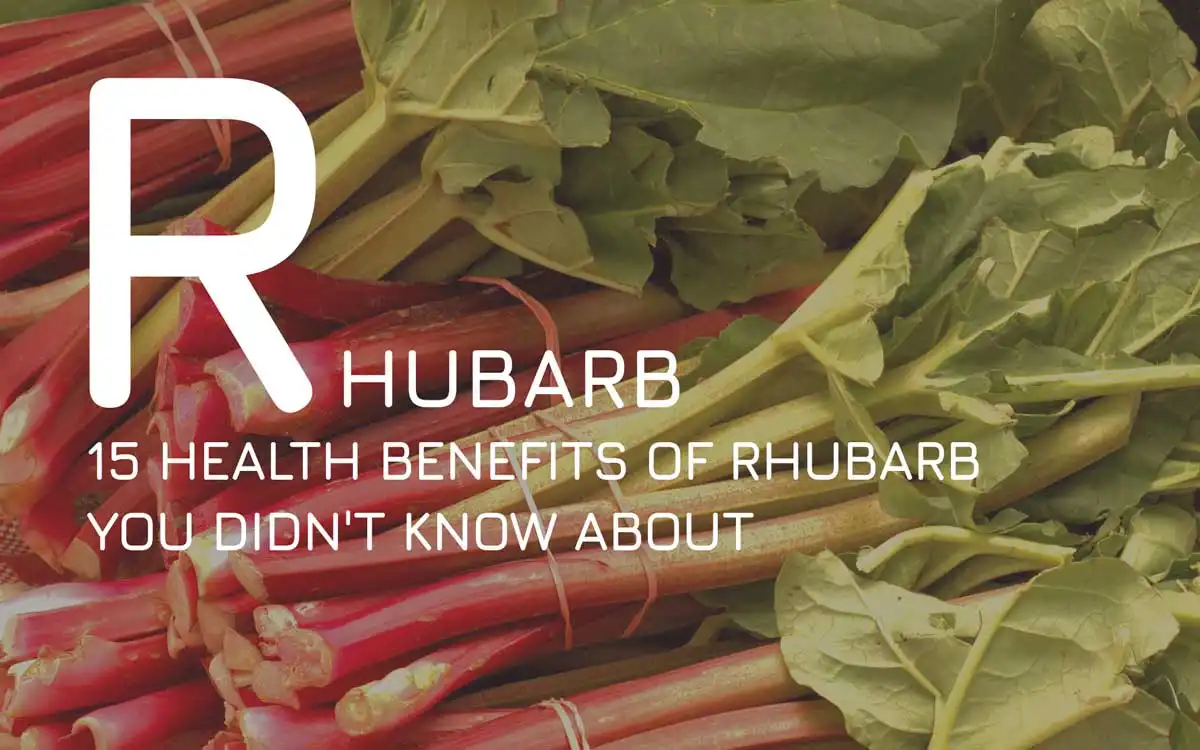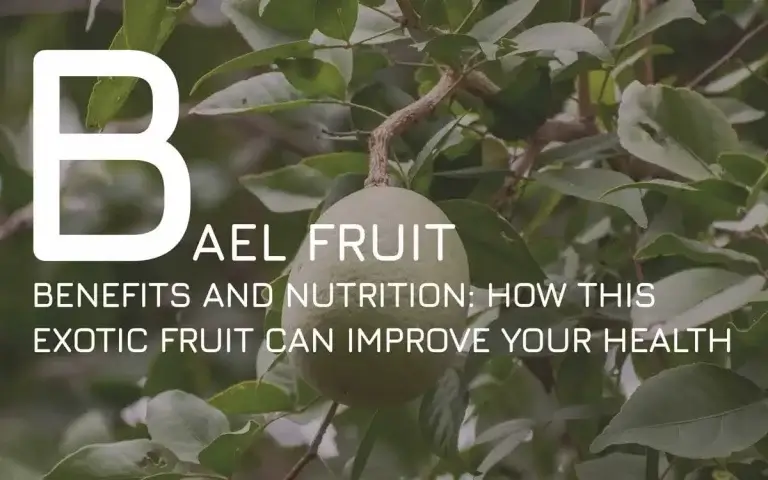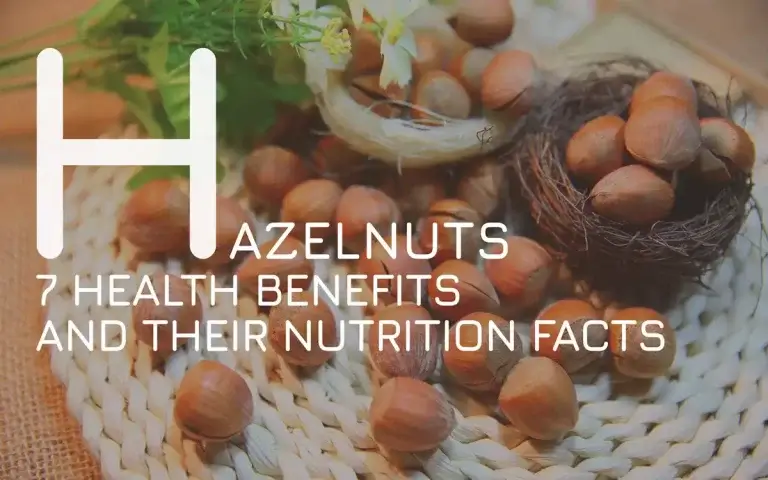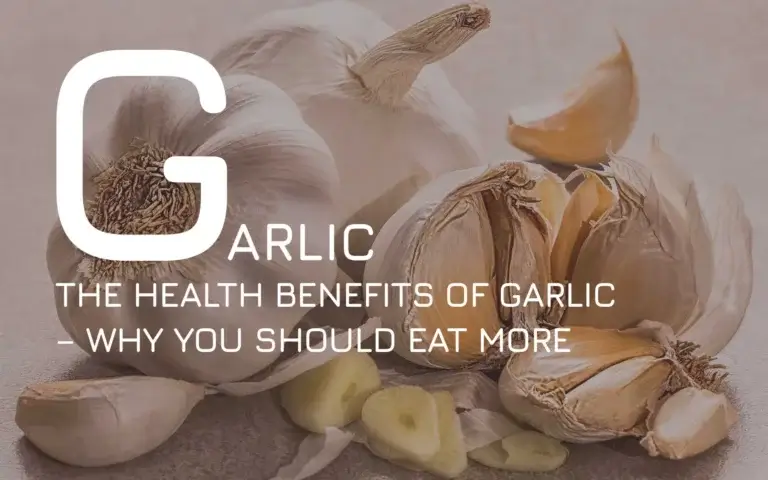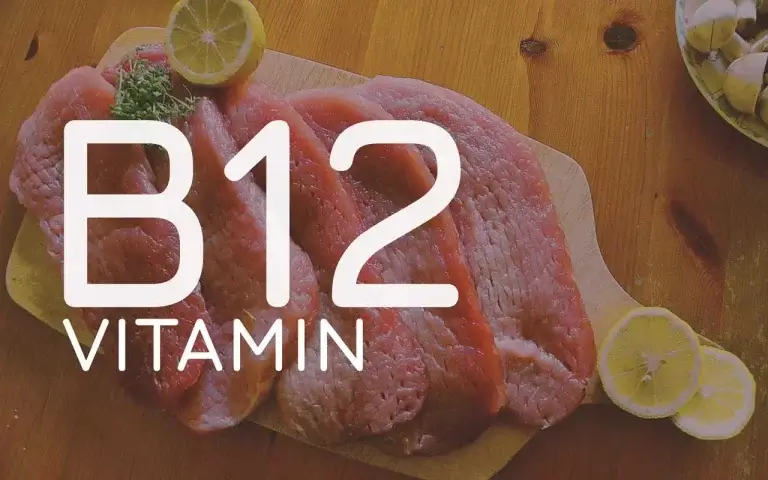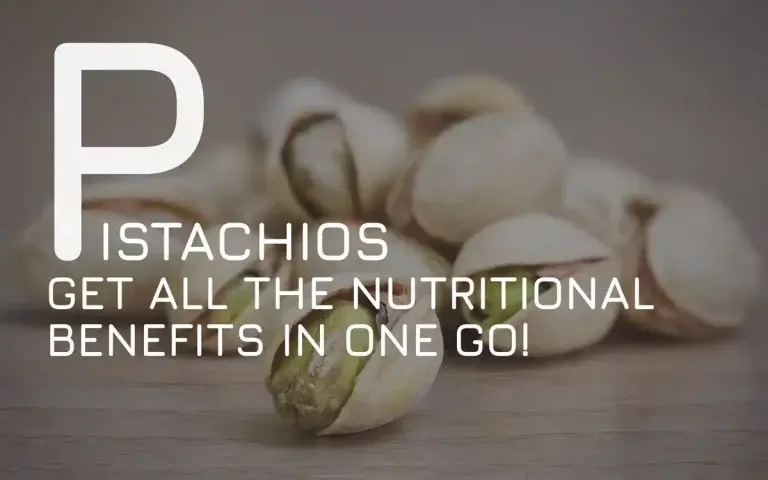15 health benefits of rhubarb you didn’t know about
The health benefits of rhubarb are many! If you’re looking for a health boost, look no further than rhubarb. This nutrient-rich vegetable has been used for centuries to treat a variety of health problems. Rhubarb root tea is especially beneficial, as it helps improve digestion and supports the immune system. Rhubarb also contains high levels of antioxidants, which help protect the body against disease. So if you’re looking for a healthy way to improve your health, be sure to add rhubarb to your diet!
What is Rhubarb?
Rhubarb is a perennial herbaceous plant that is part of the Polygonaceae family. It is grown all year round in various parts of the world and can be easily accessed anytime during the year. The leaves are primarily the parts of this plant used in some cases for desserts or for savory foods. Rhubarb is often regarded as a vegetable, but it is also considered a fruit in American cuisine.
The thick rhizomes of this plant give it a unique look, and its peppery taste makes it a popular ingredient in many dishes.
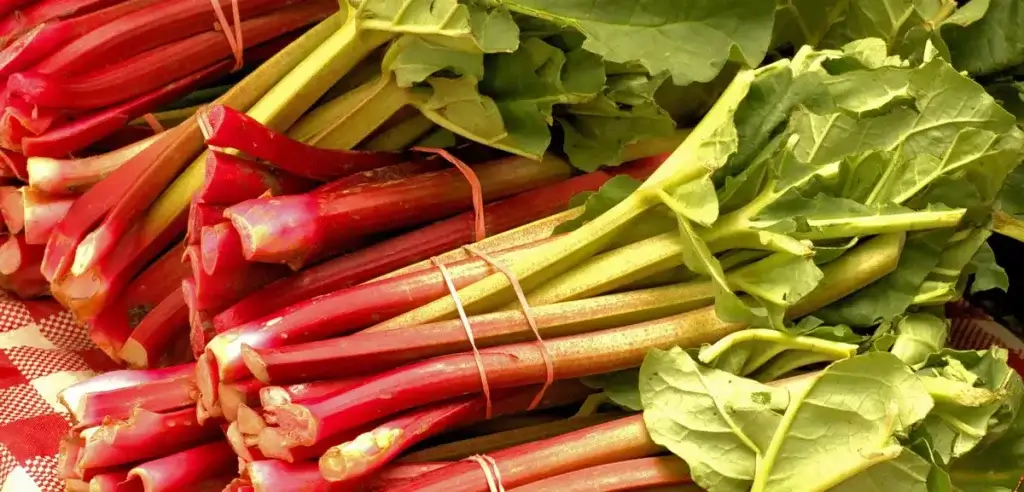
Rhubarb is known for its tart flavor and is often used in pies and other desserts. It can also be made into jams and jellies or added to savory dishes such as stews. In addition to its culinary uses, rhubarb has also been traditionally used for medicinal purposes. Today, it is still sometimes used as a treatment for digestive issues such as constipation or diarrhea.
Rhubarb is generally considered safe to consume in small amounts. However, eating large quantities of the plant can lead to stomach upset, and the leaves of the plant contain oxalic acid, which can be toxic if consumed in large amounts.
Rhubarb varieties
Rhubarb (Rheum rhabarbarum) is a perennial that is grown for its tart, juicy stalks. The three main types of rhubarb are red, speckled (pink), and green. The most common type of rhubarb is red, which has deep crimson stalks. Green rhubarb is less tart than red and has pale green stalks. Speckled rhubarb is a hybrid of red and green, and has pink or light green stalks.
All types of rhubarb are equally tart when cooked, but the color may change depending on the variety. For example, red rhubarb will retain its color when cooked, while green and speckled varieties will turn shades of pink or light purple. When selecting rhubarb, look for stalks that are firm and brightly colored. Avoid any stalks that are limp or bruised. Rhubarb can be stored in the refrigerator for up to a week. To prepare it for cooking, simply trim off the ends and cut the stalks into desired lengths.
Rhubarb nutrition facts
Rhubarb is a source of many antioxidant compounds, including anthocyanins (which give the plant its red color) and proanthocyanidins. These antioxidants have been shown to be effective against a number of health problems, including cardiovascular diseases, cancers, and diabetes. Rhubarb also contains a high amount of vitamin A, which is essential for vision and immunity.
Additionally, the vitamin C in rhubarb can help to prevent gastrointestinal issues. However, it is important to note that too much oxalic acid can lead to hyperoxaluria, a condition in which too much oxalic acid is excreted in the urine. Therefore, it is important to consult with a healthcare professional before consuming large quantities of rhubarb.
100 grams of raw rhubarb contain the following nutrients:
- 21 calories
- 4.5 grams carbohydrates
- 0.2 grams fat
- 0.9 grams protein
- 1.8 grams fiber
- 29 micrograms Vitamin K (32% of RDI)
- 11 milligrams manganese (14% of RDI)
- 288 milligrams potassium (11% of RDI)
- 8 milligrams Vitamin C (11% of RDI)
- 86 milligrams calcium (7% of RDI)
- 12 milligrams magnesium (4% of RDI)
- 0.03 milligrams Vitamin B2 – riboflavin (3% of RDI)
- 0.22 milligrams iron (3% of RDI for men, 1% of RDI for women)
- 102 IU Vitamin Α (2% of RDI)
- 0.024 milligrams Vitamin B6 (2% of RDI)
- 0.3 milligrams Vitamin B3 – niacin (2% of RDI)
- 0.02 milligram Vitamin B1 – thiamin (2% of RDI)
- 7 micrograms Vitamin B9 – folate (2% of RDI)
- 0.021 milligrams copper (2% of RDI)
- 0.085 milligrams Vitamin B5 – pantothenic acid (2% of RDI)
- 14 milligrams phosphorus (2% of RDI)
- 0.27 milligrams vitamin E (2% of RDI)
- 1.1 micrograms Selenium (2% of RDI)
- 0.1 milligrams zinc (1% of RDI)
- 4 milligrams Sodium (>1% of RDI)
- 61 micrograms of Carotene, beta
Health benefits of rhubarb
Rhubarb is a popular ingredient in pies and jams, but this tart plant can also be a valuable addition to your diet. Rhubarb is an excellent source of fiber, which can promote regularity and help to reduce cholesterol levels. The plant also contains powerful antioxidants, which can protect cells from damage and may boost the immune system.
It is also a good source of several nutrients, including vitamin K, manganese, potassium, and vitamin C. Vitamin K is important for blood clotting and bone health, while manganese is essential for metabolism and cell growth. Potassium helps to regulate high blood pressure and heart rate, while vitamin C is a powerful antioxidant that helps to protect cells from damage.
Calcium is also present in rhubarb, though it is not as bioavailable as it is in other foods such as dairy products. However, the calcium in rhubarb can still contribute to bone health. In addition to its nutritional value, rhubarb is also low in calories and fat-free, making it a healthy addition to any diet.
1. Delays skin ageing
Rhubarb is a plant that has many benefits, one of which is delaying skin aging. The plant contains Vitamin C, which according to studies, is a natural antioxidant that can neutralize free radicals. This in turn reduces wrinkles and facial expression lines.
Aside from that, rhubarb also keeps your skin looking young and shiny. It helps to reduce damage caused to cells, and protects you from bacteria that may cause infections. In fact, raw rhubarb has been used by alternative physicians to treat various skin diseases. If you want to try it yourself, you can make a paste out of the rhubarb stems and apply it to your facial area. Let it sit for a minute before rinsing it off with hot water. Do this every day and you will see results in no time.
2. Rhubarb aids in weight loss
Rhubarb has been found to be beneficial for weight loss in several ways. Rhubarb contains catechins, which are also found in green tea and have been shown to boost metabolism. Rhubarb is also a good source of fiber, which helps to promote weight loss by keeping you feeling fuller longer. In addition, rhubarb has laxative properties, making it a useful tool for cleansing the body and reducing weight. Overall, rhubarb appears to be an effective aid in the weight loss process.
3. Rhubarb relieves constipation
Rhubarb is a plant that has many potential health benefits. One of those benefits is relief from constipation. Rhubarb contains a variety of compounds that work together to stimulate the digestive system and promote regularity.
Studies have shown that rhubarb can be particularly effective in treating diarrhea. The tannins in rhubarb are believed to be responsible for this effect. In addition to its laxative properties, rhubarb also contains important nutrients like dietary fat and protein that can help to support digestive function. Consequently, it can be an effective natural remedy for constipation.
4. Can aid bone health
Rhubarb is a good source of vitamins and minerals, making it beneficial for overall health. It is high in vitamin K, which plays a vital role in bone metabolism and has been shown to reduce the risk of fractures. Additionally, rhubarb provides calcium and other essential minerals for healthy bones. As a result, consuming rhubarb can help to improve bone health and prevent osteoporosis.
5. Protects heart health
Rhubarb is a good source of fiber. A recent study found that consuming rhubarb stalk fiber lowered cholesterol levels by 9%. This is believed to be due to the soluble fiber content of rhubarb, which helps to bind cholesterol and remove it from the body. In addition to lowering cholesterol, rhubarb also has a beneficial effect on heart health.
A study in China found that a solution made from Chinese rhubarb had electrophysiological effects on the feline heart, indicating that it has the potential to protect against heart disease. Given these findings, it appears that consuming rhubarb may offer significant protection for heart health.
6. Can aid kidney health
Rhubarb has been used for centuries in Traditional Chinese Medicine to treat a variety of ailments. More recently, it has been studied for its potential role in treating autoimmune diseases and kidney disorders.
Rhubarb contains oxalic acid, which is thought to be responsible for its efficacy in treating these conditions. However, oxalic acid and calcium oxalate can also lead to increased kidney stones. As a result, it is important to consult an expert before taking a rhubarb supplement. When used correctly, rhubarb can be a powerful tool in the fight against autoimmune diseases and kidney disorders. However, its potential side effects should not be ignored.
7. Helps combat cancer
Rhubarb is a high-antioxidant food and contains a host of powerful free-radical scavengers like quercetin. This means that it can help to fight off the damaging effects of free radicals in the body. Free radicals are unstable molecules that can cause damage to cells, leading to inflammation and a host of health problems. Quercetin is a powerful antioxidant flavonoid that it has been shown to be particularly effective at neutralizing free radicals.
Adding rhubarb to your diet is a great way to boost your antioxidant intake and help protect your cells from damage. It is available fresh in the spring and early summer, or you can find it frozen year-round. Rhubarb is also a good source of fiber, vitamin C, potassium, and manganese.
Rhubarb has been shown to be effective in fighting cancerous growths in the digestive, respiratory, and reproductive systems. This includes the stomach, pancreatic, nasopharyngeal, lung adenocarcinoma, and ovarian carcinoma. Rhubarb does this by inhibiting the growth of tumor cells, suppressing tumor invasion and migration, and hindering the formation of tumor neovascularization. These antitumor responses may be attributed to various chemicals extracted from rhubarb, such as rhein, emodin, distyrene and aloe emodin.
Also, Rhubarb has anticancer properties which can significantly increase in baked form.
8. Boosts brain health
According to studies, rhubarb has been shown to help in reducing brain inflammation. This, in turn, helps in preventing strokes and Alzheimer’s disease as they are known to occur. Rhubarb is also known to help in boosting brain health by reducing oxidative stress. This, again, is helpful in preventing Alzheimer’s disease from developing any further.
Furthermore, rhubarb has also been shown to be helpful in treating other brain-related disorders such as Parkinson’s disease and dementia because it contains lindleyin. Lindleyin is known to help in the treatment of these disorders by reducing the inflammation of brain cells.
Therefore, it can be said that including rhubarb in one’s diet is beneficial for overall brain health.
9. Might Aid Diabetes Treatment
Type II diabetes patients may be able to lower their blood sugar levels and HbA1C levels by consuming rhubarb. The plant contains compounds that can improve the body’s response to insulin, helping to keep blood sugar levels under control. Additionally, as cardiovascular disease is a common complication of diabetes, consuming rhubarb may help to prevent this from happening. However, further research is needed to confirm these effects.
10. Relieves PMS symptoms
Rhubarb is a food that has been shown in studies to relieve hot flashes, particularly during menopause. Rhubarb contains compounds that are thought to mimic the effect of estrogen in the body. Estrogen is a hormone that helps to regulate the menstrual cycle and can reduce hot flashes during menopause. In addition, rhubarb is rich in antioxidants and fiber, which can also help to reduce symptoms of PMS. If you are experiencing hot flashes or other symptoms of menopause, talk to your doctor about whether rhubarb may be right for you.
11. Rhubarb can improve vision
Substances like resveratrol, lutein and vitamin C that are found in rhubarb have been known to improve vision. Lutein helps to protect the eye from damage caused by ultraviolet light, while vitamin C is essential for the production of collagen, a protein that helps to keep the eyes healthy and free from disease.
Resveratrol has been shown to reduce inflammation and oxidative stress, both of which are linked with vision problems. In addition, resveratrol may also help to prevent the formation of new blood vessels, a process known as neo-angiogenesis. As a result, rhubarb extract may be considered as a promising therapeutic agent for eye diseases such as age-related macular degeneration (AMD), retinal angiomatous proliferation and macular telangiectasia.
Thus, including rhubarb in your diet may help to improve your vision and protect your eyes from disease.
12. Helps digestion
Rhubarb is a high-fiber food that may help ease digestion. A study was done on burn victims to see whether rhubarb may improve abdominal discomfort and promote a healthy and normal digestive process. The study found that rhubarb could help protect the intestinal wall, reduce bloating and stomach discomfort, and promote regularity. Rhubarb does this by increasing the secretion of gastrointestinal hormones and promoting normal contraction of the muscles that mix the contents of the gastrointestinal tract.
13. Reduces Inflammation
Modern science has now confirmed that rhubarb does indeed have anti-inflammatory effects. Studies have shown that the compounds found in rhubarb can help to block the production of inflammatory cytokines, resulting in reduced inflammation. This makes rhubarb an effective treatment for conditions such as arthritis and Crohn’s disease. Rhubarb is also a rich source of antioxidants, which helps to protect cells from damage caused by free radicals. These properties make rhubarb a powerful tool in the fight against inflammation.
15. Rhubarb works as a natural hair coloring agent
Rhubarb roots contain oxalic acid that gives a light blonde color to the hair. Oxalic acid helps maintain hair longer and does not harm the skin. Mix about three tablespoons of rhubarb seed powder to 1-2 cups of water and cook for 15 minutes. Set the bed for two nights. Immediately rinse off your hair with this liquid and you will have amazing color. This is a benefit. It’s probably best to add some rhubarb to your diet. There is also an important question that needs answers. Return. Terms and conditions apply here.
When it’s best?
Rhubarb is typically harvested in the spring, but it can also be harvested in late summer or early fall. The best time to harvest rhubarb depends on the type of plant and the desired flavor. For example, if you want to make a sweeter jam or pie, you should harvest the stalks in the spring when they are young and tender. However, if you prefer a tart flavor, you should wait until the stalks are slightly older and have more acidity. Regardless of when you harvest it, make sure to choose fresh, firm stalks for the best flavor.
What to look for when buying rhubarbs?
When looking to buy rhubarbs, there are certain things you should keep in mind in order to get the best quality possible. For starters, you want to make sure that the stalks are firm and crisp. Avoid any that are wilted or limp, as this is a sign of age.
In addition, the stalks should be deep red color, with no green streaks. The leaves should also be fresh and brightly colored. Avoid any that are yellow or brown, as this indicates that the plant is past its prime. By following these tips, you can be sure to find the freshest and tastiest rhubarbs available.
How to store rhubarbs?
If you’re lucky enough to have a bumper crop of rhubarb, you’ll need to know how to store it properly to ensure that it stays fresh and delicious. Rhubarb stalks should be clean and free of any dirt or debris. The leaves should be intact and there should be no signs of wilting or yellowing. Once you’ve inspected the rhubarb, place it in a plastic bag or container and store it in the crisper drawer of your fridge. When you’re ready to use the rhubarb, simply wash it under cold water and trim away any leaves or tough ends. With proper storage, your fresh rhubarb will stay fresh for up to two weeks.
Preparing rhubarbs
When preparing rhubarb, it is important to remove the leaves, as they are poisonous. The stalks can then be cut into whatever size pieces you need. If you are using the rhubarb raw, it is important to note that it can be quite tart, so you may want to add a sweetener such as sugar or honey. However, if you are cooking the rhubarb, the natural sugars will caramelize and provide a sweet flavor without any additional sweeteners. Whether you are using it in a sweet or savory dish, rhubarb is a versatile ingredient that can add a unique flavor to your meal.
How to use rhubarbs (Recipes)
Rhubarb is a versatile ingredient that can be used in sweet or savory dishes. Here are some recipes to help you make the most of this unique fruit.
Rhubarb Pie: This classic dessert is made with just a few simple ingredients: sugar, flour, butter, and of course, rhubarb. The key to making a good rhubarb pie is to use the right ratio of sugar to sourness. Too much sugar will make the pie too sweet, while too little will make it unpalatable. Rhubarb also contains a lot of water, so be sure to cook it down before adding it to the pie filling.
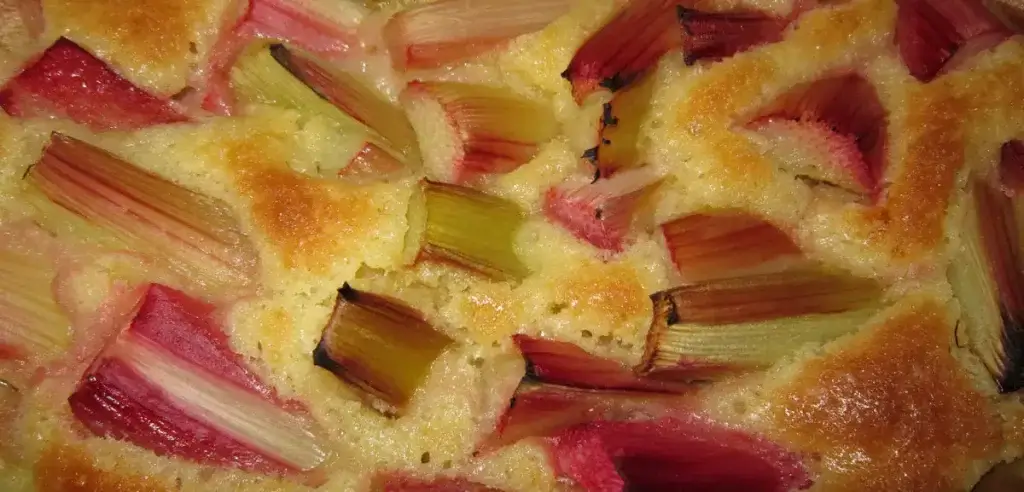
Rhubarb Crisp: This recipe is similar to rhubarb pie, but it has a crumb topping that makes it extra delicious. To make the crisp, mix together sugar, flour, oats, butter, and cinnamon. Then spread the mixture over the top of the cooked rhubarb filling. Bake the crisp in a 350 degree Fahrenheit (180 degrees Celcius) oven until golden brown and bubbly.
Rhubarb Compote: This is a great recipe for using up extra rhubarb. Simply simmer chopped rhubarb in water with sugar and lemon juice until thickened. Serve the compote over pancakes, waffles, or ice cream for a delicious treat.
Rhubarb Sauce: This sweet-tart sauce is perfect for serving with pork or chicken. To make the sauce, simmer chopped rhubarb in water with sugar and vinegar until thickened. Then add a bit of cornstarch to help thicken it up even more. Serve warm or cold.
Rhubarb Jam: This easy jam can be made with just three ingredients: sugar, lemon juice, and of course, rhubarb. Simply cook the chopped rhubarb down with sugar and lemon juice until thickened. Pour into jars and enjoy!
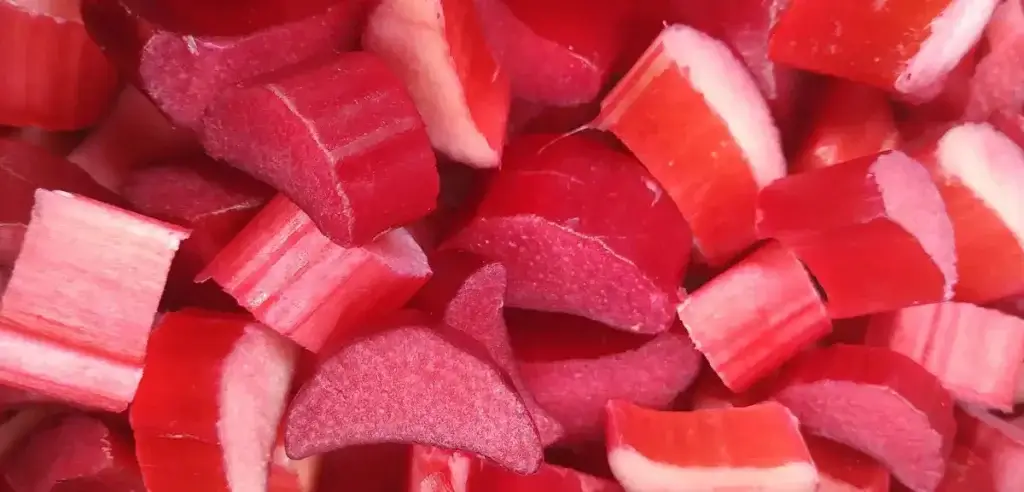
How to make rhubarb tea
Rhubarb tea is a refreshing, tart beverage that can be enjoyed hot or cold. To make rhubarb tea:
- Start by washing and chopping one cup of fresh rhubarb stalks into 1-inch pieces.
- Then, add the chopped rhubarb to a pot of boiling water and let it simmer for 10 minutes.
- Next, remove the pot from the heat and allow the tea to steep for 5 minutes.
- Finally, strain the tea into a cup and enjoy.
For a sweeter version of this beverage, add honey or sugar to taste. Rhubarb tea is a great way to enjoy the fresh flavor of this springtime vegetable all year long.
Risks and Side Effects
Rhubarb leaves contain oxalic acid, which can be poisonous if ingested in large quantities. However, cooking the leaves can significantly decrease their oxalic acid content and reduce the risk of adverse side effects. Rhubarb is also used medicinally, but it can cause some side effects, such as gastrointestinal problems. Long-term use of rhubarb can also cause health problems due to the oxalic acid it contains.
Therefore, it is best to consult with a doctor before taking rhubarb medicinally, particularly if you are pregnant or have kidney or liver problems. There have also been concerns about the combination of medicinal rhubarb and some medications, including diuretics or blood thinners. While moderation is key, eating the stalks of the plant is generally considered safe.
Final Thoughts
Rhubarb is a nutritious plant that offers a range of health benefits. It is a good source of fiber and vitamins, and it also contains a variety of antioxidants that can help to protect the body against disease. Furthermore, rhubarb has been shown to have anti-inflammatory properties, which makes it an effective treatment for conditions such as arthritis and asthma. While more research is needed to confirm these health effects, there is no doubt that rhubarb is a healthy food that should be included in the diet.
FAQs
By NutriWins team

